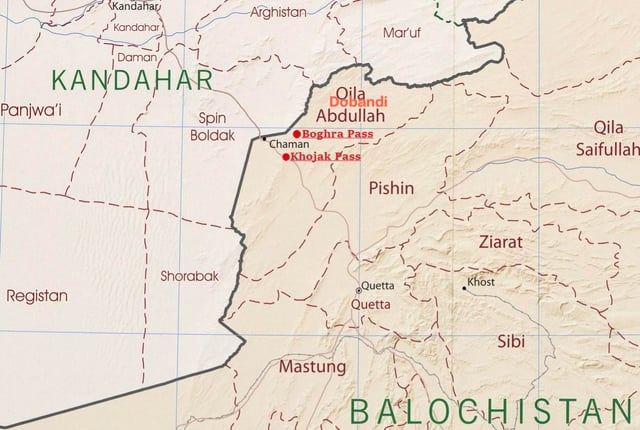1. Introduction
India has added Gogabeel Lake in Bihar to its list of Ramsar Sites, marking the 94th internationally recognised wetland under the Ramsar Convention.
This inclusion highlights India’s continued commitment to wetland conservation and sustainable management.
Date of Recognition: November 2025
Location: Katihar District, Bihar
2. Geographical and Ecological Features
Type: Oxbow Lake (formed when a river meander is cut off from the main channel).
Position: Lies between the Ganga and Mahananda Rivers in north Bihar.
Ecological Role:
Functions as a floodplain wetland, maintaining local hydrological balance.
Serves as a critical habitat for migratory and resident birds, fish, and aquatic plants.
Acts as a natural flood buffer and groundwater recharge zone.
Seasonal Dynamics: During the monsoon, the lake connects to both the Ganga and Mahananda rivers, enriching biodiversity and water exchange.
3. Community-Based Conservation
Bihar’s First Community Reserve: Gogabeel is managed by local communities, making it an example of community-led conservation.
Local residents are directly involved in maintaining, monitoring, and conserving the wetland’s biodiversity.
Promotes eco-friendly livelihoods such as sustainable fishing, bird tourism, and wetland farming.
4. Significance for Bihar
First Community Reserve in Bihar.
Sixth Ramsar Site in the state (after Gokul Jalashay and Udaipur Jheel).
Highlights Bihar’s growing contribution to India’s wetland conservation network.
Positions Bihar third among Indian states (after Tamil Nadu and Uttar Pradesh) in number of Ramsar sites.
5. India’s Growing Global Role in Wetland Conservation
Total Ramsar Sites (as of Nov 2025): 94
Total Area Covered: Over 13.6 lakh hectares.
Global Ranking:
🥇 United Kingdom – 176 sites
🥈 Mexico – 144 sites
🥉 India – 94 sites (Rank 3 globally, Rank 1 in Asia)
India has added 67 wetlands in the last 11 years, reflecting its accelerated conservation efforts.
The announcement was made by Environment Minister Bhupender Yadav, reaffirming the government’s emphasis on community-based and sustainable wetland management.
6. About the Ramsar Convention
Full Name: Convention on Wetlands of International Importance.
Adopted: 1971 at Ramsar, Iran.
Came into Force: 1975.
Total Member Countries: 172 (as of 2025).
Total Ramsar Sites Worldwide: 2,546 sites.
Objective:
To conserve and wisely use wetlands through international cooperation.
To recognise wetlands of ecological, economic, and cultural importance.
7. Importance of Ramsar Sites
Recognised for their role in:
🌊 Hydrological regulation – balancing water cycles and recharging groundwater.
🌾 Flood control and drought mitigation.
🐦 Biodiversity conservation – supporting endangered species and migratory birds.
👩🌾 Livelihood generation – providing fish, reeds, and raw materials.
🌍 Climate resilience – acting as carbon sinks and buffers against extreme weather.
8. Exam-Oriented Key Facts
| Fact | Details |
|---|---|
| Newly Added Site | Gogabeel Lake, Katihar District, Bihar |
| Designation Year | 2025 |
| Ramsar Site Number (India) | 94th |
| Type of Wetland | Oxbow lake / floodplain wetland |
| Significance | Bihar’s first community reserve |
| Bihar’s Ramsar Sites (Total) | 6 |
| India’s Rank (Global) | 3rd (after UK and Mexico) |
| India’s Total Ramsar Sites (2025) | 94 |
| Ramsar Convention Year & Place | 1971, Ramsar (Iran) |
| India’s Area under Ramsar Sites | 13.6 lakh hectares (approx.) |
| Environment Minister (2025) | Bhupender Yadav |
9. Broader Environmental Significance
Integrates local and global efforts: Combines grassroots stewardship with international conservation goals.
Supports Sustainable Development Goals (SDGs): Especially SDG-13 (Climate Action) and SDG-15 (Life on Land).
Nature-Based Solutions: Enhances India’s approach to climate resilience and ecological restoration.
Symbol of India’s Leadership: Reflects India’s growing global standing in environmental diplomacy.
10. Conclusion
The inclusion of Gogabeel Lake as India’s 94th Ramsar site represents a milestone in wetland protection and community-led conservation.
It highlights India’s integrated vision for balancing development with ecology.
Gogabeel stands as a model for sustainable coexistence between people and nature, strengthening India’s eco-conservation and climate resilience agenda.








